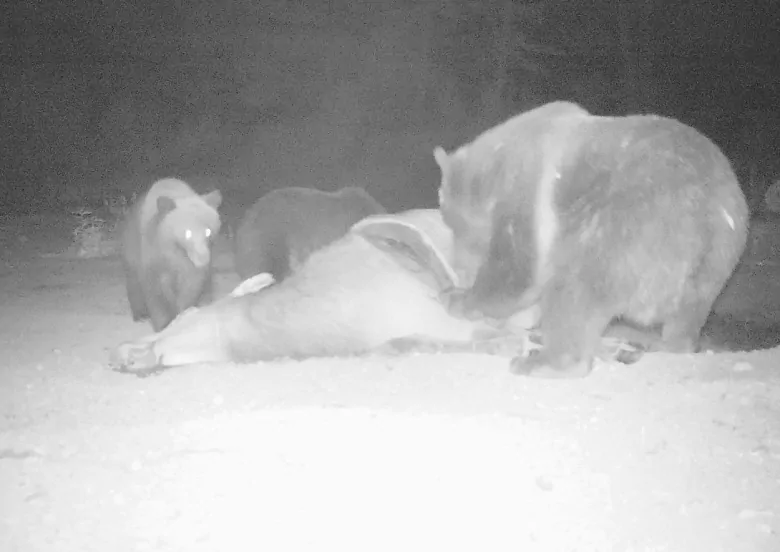Grizzlies use B.C. roadkill dumps as feeding grounds, says researcher

In 2016, Clayton Lamb set out to investigate how many unreported grizzly bear deaths were occurring in the southern Rockies of British Columbia.
As part of his PhD study, he collared about a dozen grizzlies and tracked them using GPS.
Following their movements across the Kootenays, Lamb wanted to see if they were killed at the hands of people and where.
But while tracking their movements, the grizzly bear biologist made another discovery.
A number of bears were congregating by roadside gravel pits that were filled with the carcasses of animals killed by road accidents.
The dead wildlife were placed there by contractors for the province who had removed their bodies from highways. Every few days, they’d dump various animals, including moose, elk, deer and bears into the gravel ditches and eventually bury them.
Grizzly bears were drawn to these pits and were feeding off them.
“We noticed that a number of the bears that we were tracking were sort of congregating on certain locations during the year,” Lamb said.
But some of these dumping sites were located near highways, restaurants and sometimes within a kilometre of a community, putting wildlife and people in a dangerous situation.
“It puts them into conflict with people, just due to proximity,” Lamb said.
Curious to see it for himself, Lamb set up a camera at a pit near Hosmer, B.C., about 100 kilometres east of Cranbrook.
The footage provided proof the pits had become regular feeding grounds overnight for grizzly bears and other wildlife.
Lamb knew something had to be done, so he contacted the Ministry of Transportation and persuaded it to upgrade the carcass pits.
As a result, the ministry designed new pits with concrete walls and an electric fence perimeter. The new design was unveiled in Elko, B.C., about 20 kilometres north of the U.S. border, last month.
The province is keeping a close eye on how well the new design works. So far, grizzly bears have bypassed the pits, said a spokesperson who praised Lamb’s initiative.

A second facility is slated for Sparwood, B.C. in spring 2020.
Lamb says there’s potential for the infrastructure to be put to use at more pits frequented by grizzly bears between Cranbrook and the Alberta border.
“It’s a good news story of science and people coming together to find some creative solutions to allow humans to coexist in the Rockies.”





